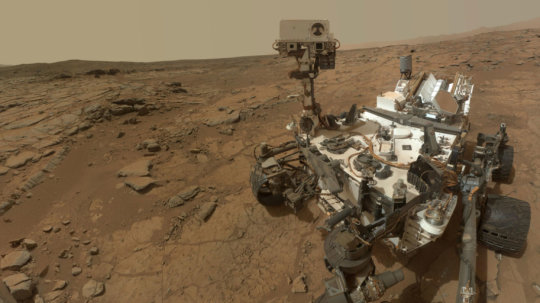We reach more than 65,000 registered users in Dec!! Register Now

A reliable fuel for space missions
- December 31, 2015
- 1359 Views
- 0 Likes
- 0 Comment
Any kind of mission to space and beyond it needs a reliable power source for a safe and sustained journey. Many sorts of fuel were under research and after various trials the energy produced by radio isotope system seems to be a promising one. The department of energy oak ridge national laboratory (ORNL) Tennessee has completed its first research on specialized fuel to power future deep space missions which is U.S. first production in 30 years.
Any kind of mission to space and beyond it needs a reliable power source for a safe and sustained journey. Many sorts of fuel were under research and after various trials the energy produced by radio isotope system seems to be a promising one. The department of energy oak ridge national laboratory (ORNL) Tennessee has completed its first research on specialized fuel to power future deep space missions which is U.S. first production in 30 years.
During the late 1980 the production was ceased in the savannah river plant in south carolina. Ever Since the 50 grams of plutonium-238-roughly the mass of a golf ball production was the first demonstration in united states.
Heat from the decay of isotope plutonium-238 is converted into electricity using the radioisotope power system. These systems have good durability and reliability. In all, 27 past U.S. space missions have used this radioisotope power for their electricity and heat.
Associate administrator for NASA’s Science mission, Directorate in Washington, John Grunsfeld, has mentioned that his team mates’ significant achievement at DOE signals is a new renaissance in the exploration of our solar system and Radioisotope power systems are a key tool to power the next generation of planetary orbiters, landers and rovers in our quest to unravel the mysteries of the universe.
In the past 50 years The Department of Energy (DOE) has successfully and safely provided radioisotope power systems for NASA, Navy and Air Force missions
Franklin has mentioned "As we seek to expand our knowledge of the universe, the Department of Energy will help ensure that our spacecraft have the power supply necessary to go farther than ever before," Orr, Under Secretary for Science and Energy at DOE. "We're proud to work with NASA in this endeavor, and we look forward to our continued partnership."
The currently available radioisotope power system, also supplied to NASA by the DOE, is called the Multi-Mission Radioisotope Thermoelectric Generator (MMRTG). Essentially a nuclear battery, an MMRTG can provide about 110 watts of electrical power to a spacecraft and its science instruments at the beginning of a mission. On some missions, such as NASA's Curiosity Mars rover (now deep into its third Earth year seeking signs of habitable conditions on the Red Planet), the excess heat from the MMRTG can also be used to keep spacecraft systems warm in cold environments.
The next NASA mission planning to use an MMRTG is the Mars 2020 rover, due to be launched as part of NASA's Journey to Mars, to seek signs of past life on the Red Planet, test technology for human exploration, and gather samples of rocks and soil that could be returned to Earth in the future. Two (unfueled) MMRTGs are currently built and in storage at DOE facilities; one is reserved for Mars 2020, and the other could be used on a future mission. Fabrication of the fuel pellets for the Mars 2020 MMRTG, using the existing U.S. supply of plutonium dioxide, is already underway.
Of the 77 pounds (35 kilograms) of existing plutonium-238, about half provide enough heat to meet power specifications of planned spacecraft. The remainder, due to its age, does not meet specifications, but can be blended with newly produced Pu-238 to extend the usable inventory. With continued coordination, both agencies plan to increase production after this important demonstration milestone. Researchers will examine the sample for chemical purity and plutonium-238 content to determine whether adjustments need to be made before scaling up the process.
The DOE's Office of Nuclear Energy develops, manufactures, tests and delivers radioisotope power systems for space exploration and national security missions and maintains responsibility for nuclear safety throughout all aspects of the missions.
NASA's Radioisotope Power System (RPS) program, managed by NASA Glenn Research Center in Cleveland, is FUNDING the development of new, higher efficiency thermoelectric materials that could be incorporated into a next-generation enhanced MMRTG that would provide about 25 percent more power at the start of a typical mission, and 50 percent more power at the end of a mission.
NASA's JPL manages several missions that utilize radioisotope power, including the Curiosity Mars rover and the Cassini spacecraft at Saturn. Even though this type of fuel is more promising the future awaits for more interesting use of power sources that can be used for space missions.
Source:
http://www.sciencedaily.com/releases/2015/12/151223061045.htm
NASA/Jet Propulsion Laboratory









